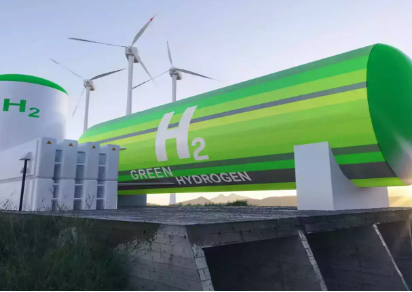India Launches ₹200-crore Decentralized Green Hydrogen Initiative
The Government of India has introduced a ₹200-crore scheme aimed at promoting green hydrogen production. This initiative focuses on innovative methods for residential and commercial applications. The Ministry of New and Renewable Energy outlines various pilot projects. These include floating solar-based hydrogen production, biomass utilization, and wastewater conversion. The aim is to decentralize hydrogen use for cooking, heating, and off-grid electricity generation.
Scheme Overview
The ₹200-crore scheme is designed for pilot projects. It targets innovative pathways for green hydrogen production. The initiative is aimed at diverse applications, including community and commercial uses. A government body will oversee the implementation of this scheme. This initiative is part of a broader strategy to establish a green hydrogen ecosystem.
Various innovative methods will be explored under this scheme. Floating solar panels will be tested for hydrogen production. Biomass-based hydrogen generation will also be developed. Additionally, wastewater treatment processes will be utilised for hydrogen extraction. These methods aim to enhance sustainability and resource efficiency.
Decentralized Applications
Decentralized applications of green hydrogen are a key focus. These include cooking and heating solutions for households. Off-grid electricity generation is another potential use. Furthermore, green hydrogen can power off-road vehicles. This decentralization aims to reduce reliance on traditional energy sources.
India’s solar photovoltaic (PV) exports have surged . In the 2023-24 period, exports reached $2 billion, a 23-fold increase. Most of these exports were directed to the US market. Major contributors include companies like Waree, Adani, and Vikram. This trend indicates a growing demand for Indian solar products.
Impact of US Trade Policies
US trade policies are shifting, affecting solar imports. Tariffs on imports from Southeast Asian countries have been reinstated. This change could benefit Indian exporters. Additionally, the US is moving away from Chinese imports. This creates opportunities for India to expand its market share in the US.
India’s battery market remains heavily import-dependent. The International Energy Agency projects a shortfall in domestic production. By 2030, local production will meet only 30% of demand. This dependency is expected to continue through 2035. The country will need to rely on imports, especially from China.
Future Prospects
The establishment of a green hydrogen ecosystem is a priority. This includes developing necessary infrastructure like refuelling stations. The government aims to enhance local production capabilities. However, challenges remain in the battery sector. Continued reliance on imports could hinder growth in this area.
Important Facts for Exams:
- Green Hydrogen – Green hydrogen is produced using renewable energy sources. It is seen as a clean alternative to fossil fuels. Its applications include cooking heating and electricity generation.
- Biomass Utilisation – Biomass utilisation involves converting organic materials into energy. This process can produce green hydrogen. It contributes to sustainability by reducing waste and lowering carbon emissions.
- Floating Solar Panels – Floating solar panels are installed on water bodies. They generate renewable energy without occupying land. This innovative method is being explored for hydrogen production.
- International Energy Agency – The International Energy Agency provides data on energy markets. It forecasts trends in production and consumption. Its reports guide policy decisions in energy sectors globally.
Month: Current Affairs - November, 2024
Category: Science & Technology Current Affairs



Ashis Kumar Mukherjee
November 13, 2024 at 8:13 pmNeed to financial help or support for sustainable solutions and implementation to improvement the theme is plastic pollution, clean of soil, clean of water and impact to air with very cheap economical which is make from wastage materials and multipurpose usage of the chemical compound whereupon to produce very low cost green ammonia gas the green energy is used for iron making process and so better technology for carbon capture find the research and really leverage it to help the business scale.